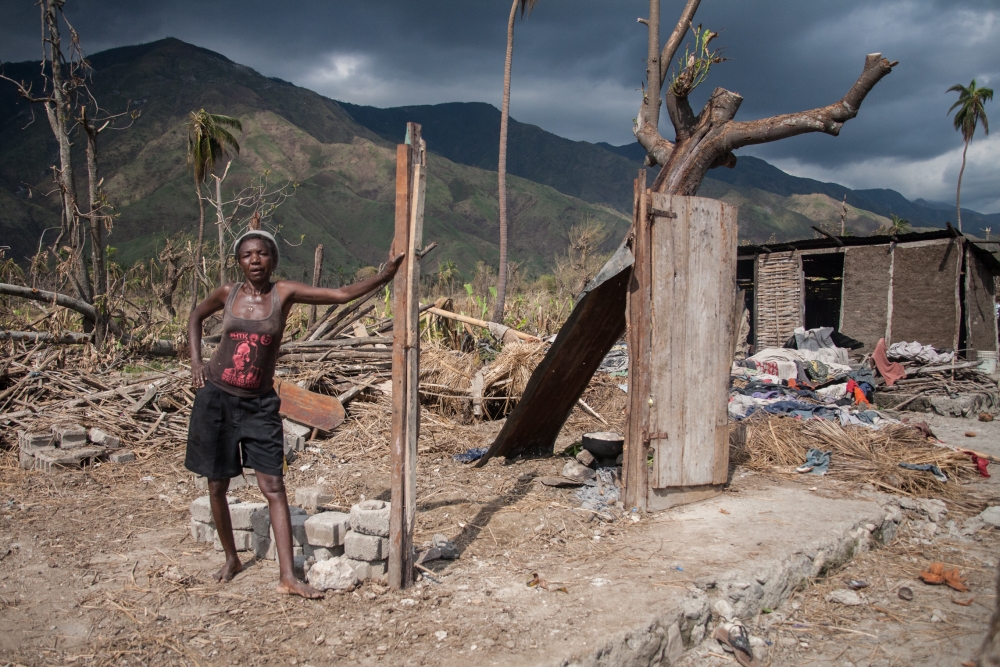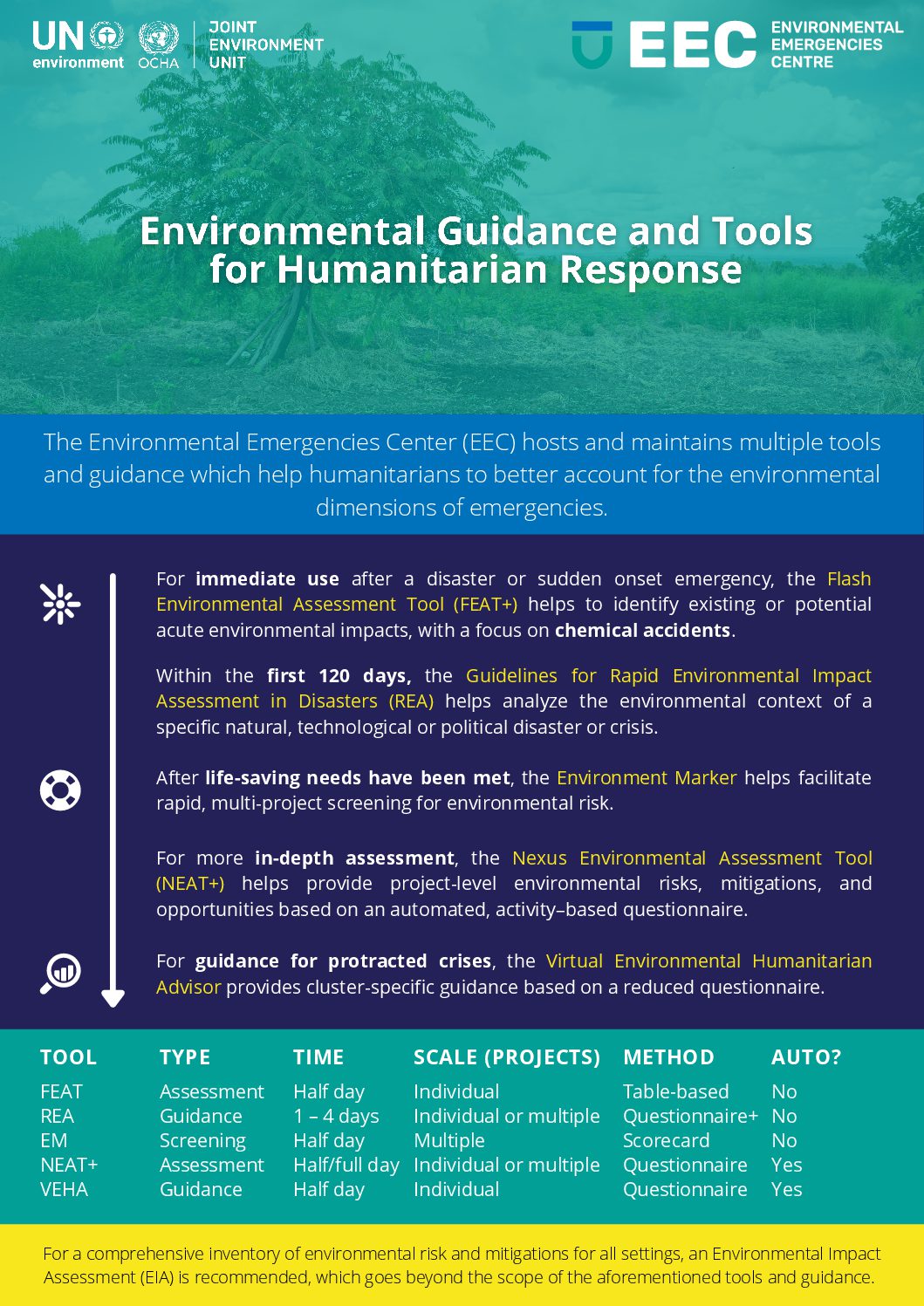Assessments
Assessment of environmental consequences after an emergency

Assessment of environmental consequences after an emergency
Assessing the environmental consequences of an emergency and prioritizing the response actions based on environmental impacts contributes to the foundation of a coherent, efficient and effective humanitarian response. Environmental assessments provide the evidence base for strategic planning and effective operations. As the depth, volume and type of information needed will change as the crisis evolves, environmental assessments need to be updated throughout the humanitarian programme cycle.
During an emergency, environmental assessments are instrumental for the prevention of secondary emergencies, addressing acute risks to human life and health, and positively contributing to the recovery and resilience of affected communities. In many instances, the initial disaster can adversely affect the natural environment directly, often with negative consequences for the livelihoods of affected populations. Moreover, existing environmental issues, for example, the over-extraction of natural resources, might affect the way humanitarian assistance is delivered1.
It is important to also evaluate how humanitarian action itself can cause or contribute to negative environmental impacts (see the Guidelines for Rapid Environmental Impact Assessments in Disasters for specific examples). Such an analysis is particularly important during multi-year crises where long-term humanitarian assistance might be required. The effectiveness of humanitarian response can be increased if activities that typically damage the environment are identified and mitigated. As the crises and modalities of humanitarian response change over time, environmental impacts may need to be reassessed.
Various tools exist to assess both the environmental consequences of a crisis as well as those caused by humanitarian action. Choosing what tool to use will depend on various criteria including (1) the type of disaster, (2) the stage at which the assessment is conducted, (3) the sector or type of project or intervention being assessed, (4) the human and financial resources available and (5) level of access to environmental expertise.
A range of environmental assessment tools exist, with each tool filling a specific purpose:
Apart from these rapid assessment tools, more comprehensive assessments, using the standard Environmental Impact Assessment process are often required for post-disaster projects and programmes based on national legislation or the regulations of funding organizations.
In addition to these tools, there are various sector-specific tools to assess the environmental impact and improve the integration of environmental issues into programme or project design. See Cluster specific pages for more information.
Finally, the UNEP/OCHA Joint Environment Unit (JEU) has developed and maintained various tools, guidance and resources to better integrate the environment into humanitarian response. To better understand the best use cases and how they interact, we have prepared the following infographic.

A situation analysis following a crisis typically looks at key crisis drivers, affected areas, the number and type of affected people, the ways in which people are affected, the most urgent needs and available capacities.
Environment is included into response plans in order to improve programme quality and accountability to disaster-affected people.
Environmental mainstreaming is dependent on successful resource mobilization, where environmental concerns must be integrated in funding proposals in order to secure funding.
Successful integration of environment into the implementation of humanitarian response requires that environment be included into preparedness and planning phases, but also effective coordination with national actors.
Response monitoring is about creating evidence for humanitarian actors about what actions should be taken to address shortcomings and fill gaps in in the response, with the aim of improving accountability towards affected populations, local government, donors and the general public.




